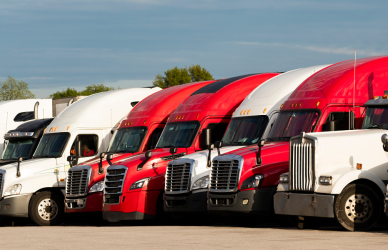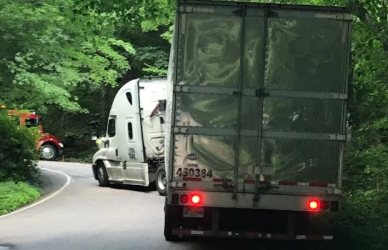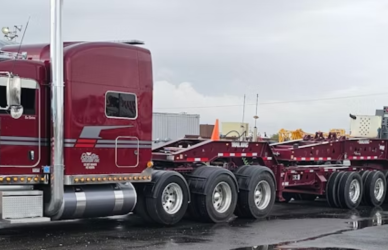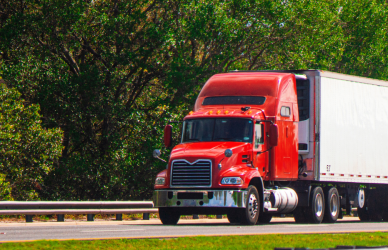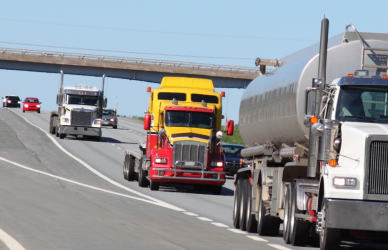America’s hardworking long-haul truck drivers may spend up to 56 minutes a day searching for parking, costing them an average of 12% of their annual income (that amounts to around $5,500 yearly!). Such is the harsh reality revealed by the latest research from American Transportation Research Institute.
This is a top concern and daily struggle for truckers.
With more than 40,000 fewer parking spaces available for trucks on the road than needed across the nation and just one spot per 11 vehicles, truck drivers must be incredibly resourceful in their search for a place to rest. Despite this immense challenge, they manage to find places where they can park safely.
Navigating life on the road isn’t easy for drivers, who must sometimes resort to creative solutions like camping out at Walmart or scouting side streets and back lots in a desperate search for some rest. Others take advantage of wider shoulders along ramps to get off the road, get some rest, and be in compliance with hours of service requirements.
With over a million users, mobile applications like Trucker Path have revolutionized the way drivers manage their routes and find parking.
Trucker Path’s chief marketing officer, Chris Oliver, discussed the math around the parking crises and the narrative of a driver shortage. “The ATA estimates the U.S. trucking sector was 78,000 drivers short last year, which is down from the record-setting 80,000 shortage of drivers in 2021,” he said at a recent webinar organized by the North Central Texas Council of Governments. “If there are 3.5 million drivers suffering a 12% productivity loss [due to truck parking shortfalls], that equals 420,000 units of productivity that are lost when all those drivers are out looking for parking.”
A mere 25% improvement in the amount of time drivers spend searching for parking could effectively take away any strain from a potential driver shortage and result in some impressive benefits. Drivers are likely to see their earnings increase, as well as reach their destinations faster with less pollution being created by cars on the roads.
Trucker Path and other similar apps are an innovative way to tackle the all-too-common parking headache. Leveraging user reviews and data from truck stops and state agencies in real-time, it creates an ever-evolving map that provides updates on available spots around the nation. The app seeks not only to facilitate access but also empower those behind the wheel with convenience which could make all journeys more efficient and reliable than before.
Oliver highlighted how technology can revolutionize the trucking industry, from sensors and cameras that monitor parking lots to crowd-sourced reviews. He also suggested AI as a way of predicting when spots may be available, offering a potential solution for easing future scarcity in these areas. “But I’m not going to pretend I have all the answers,” he admitted.
The Trucker Path app features over 20,000 points of interest in their crowdsourced mapping project. Meanwhile other apps like ParkMyRig offer fewer locations – only 11,000 hand-sourced by founder LeRoy Clemmer.
After 30 years as a company driver, Clemmer used his electronics and computer training to embark on an entrepreneurial journey: developing Apple and Android apps for truckers. In 2010 he released the ParkMyRig book – now in its 11th edition. This comprehensive guide is still available at Iowa 80 Truck Stop, making it one of the best single sources out there for finding parking spots. Subscriptions might have taken some tolls from sales over recent years, but this app-maker’s dedication has kept it alive all these years.
“They’re just junk,” he said of his competitors when he set out to build the app. “I don’t know how else to say it. I don’t like the way they’re laid out, there’s bad information, ads, pop-ups, and I have no ads or pop-ups and won’t ask you to rate the app.”
The ParkMyRig app costs $2.50 monthly or $25 a year. Trucker Path also offers paid subscriptions that do filter down ad content.
While out personally roaming the roads, Clemmer makes time to keep a finger on the pulse of truck stops. With dozens of unmarked back lots and wide shoulders under his belt – all compiled through experience-driven knowledge – he single-handedly moderates the app to track these locations, making sure it’s up to date despite having no aid with its maintenance. He also spends time getting in contact directly with property owners for only the best intel.
The trucking industry is an ever-changing landscape, and ParkMyRig and Trucker Path are here to help guide drivers along the way. Through a collaborative network of users they provide detailed information on amenities at rest stops so travelers can settle in safely wherever their journey takes them.
Despite the immense benefits of both apps, some users remain apprehensive about revealing their favorite spots in fear that these lesser-known gems will soon become overrun. Everyone wants a little bit of something just for themselves – and who can blame them?
According to Oliver, though, the crowdsourcing project works because drivers look out for each other.
“When you’ve got a million people contributing their opinions, I’m sure some will want to sandbag and not share with the world,” he said, “but for the most part I believe they do. I won’t say it’s a club. It’s a relatively tight-knit group. They tend to trust each other a little bit and help each other out.”
From Washington to state capitals, governments have moved swiftly to ensure our vital trucking industry and supply chain remain strong. Millions of dollars in funding for new parking solutions has been approved with even larger investments likely soon – a crucial move that will help keep the wheels turning on America’s highways.
Source: Overdrive




